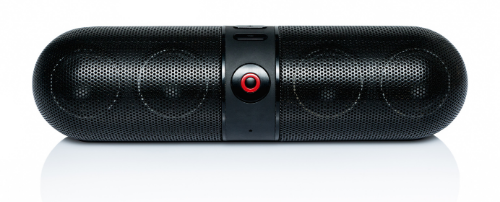Since the introduction of Bluetooth Low Energy (BLE) in Bluetooth 4.0, there are now four technologies used under Bluetooth 4.0 and later revisions. Although the history of naming these technologies has led to much confusion, the generally accepted names are Bluetooth Classic and Bluetooth Low Energy. Bluetooth Classic represents the BR, EDR, and HS (AMP) technologies, while Bluetooth LE represents the LE technology.
Bluetooth Classic devices are typically used in applications requiring streaming of data, such as audio. The physical layer and protocol of BR/EDR make socket-like streaming of data easy to accomplish. Rates of these data streams may be around 2-3 Mbps. This interface is commonly used in applications like streaming audio from mobile devices to vehicles and remote speakers. Bluetooth Low Energy brings about some great features beyond low energy operation, such as one-to-many and many-to-many communications, as well as connectionless services. BLE is often used for data transmission, location services, and device network applications. These interactions operate much more like a shared database of characteristics through the use of a Generic Attribute Profile (GATT). Most mobile devices such as phones, tablets, and computers support both Bluetooth Classic and Low Energy; however, many devices use one or the other. This interface is commonly used in applications like wearables (e.g. Fitbits).
Bluetooth Low Energy brings about some great features beyond low energy operation, such as one-to-many and many-to-many communications, as well as connectionless services. BLE is often used for data transmission, location services, and device network applications. These interactions operate much more like a shared database of characteristics through the use of a Generic Attribute Profile (GATT). Most mobile devices such as phones, tablets, and computers support both Bluetooth Classic and Low Energy; however, many devices use one or the other. This interface is commonly used in applications like wearables (e.g. Fitbits).
Due to the differences in the physical layer modulation and demodulation, BLE cannot talk with Bluetooth Classic and vice versa. Similarly a BLE device cannot use Bluetooth Classic network and transport protocols when talking to a dual mode Bluetooth device. This is critically important for machinery manufacturers because although Bluetooth devices can typically communicate over a local area network to tablets and phones reliably, if you are going to use Bluetooth to communicate between machines and attachments, or between machine ECUs, you’ll need to select a protocol for the network of devices you’re managing.![]()
As you consider specifying Bluetooth, there are a few high-level things to consider:
- BLE can manage the data rates necessary to transfer typical data loads from mobile equipment busses (e.g. CAN buses running J1939)
- Bluetooth Classic can handle a lot more data
- Bluetooth Classic supports mobile devices tethering to telematic gateways or control units onboard machines and letting one device use the other’s data plan
- Bluetooth Classic is much more energy intensive than BLE, so if you have a battery-powered application BLE is the way to go
In summary, if you have a network demand for a fairly large amount of data, and you have access to vehicle power (or battery life management is not a concern), Bluetooth Classic is a good way to go. If you’re a battery-powered application or do not require transfer of significant volumes of data, BLE provides attractive networking flexibility, low power, and a low price.
 Michael Hoffman – Sales Manager, Land Mobile
Michael Hoffman – Sales Manager, Land Mobile

